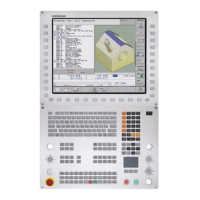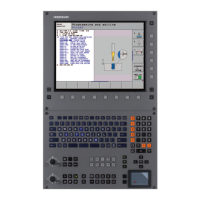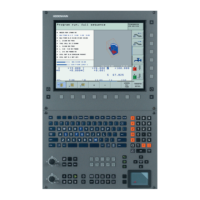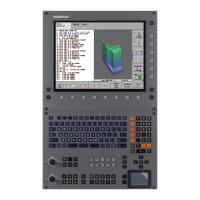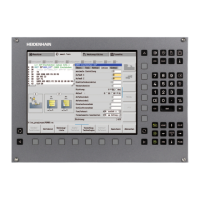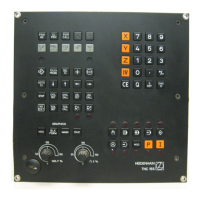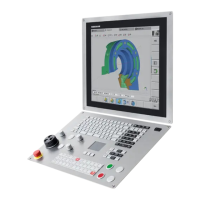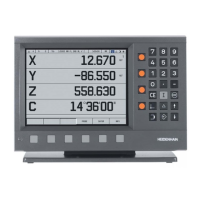516 Programming: Execution of CAM Programs, Multi-axis Machining
12.5 TCPM FUNCTION (software option 2)
Interpretation of the programmed rotary axis
coordinates
Up to now, machines with 45° swivel heads or 45° tilting tables could
not easily set the angle of inclination or a tool orientation with respect
to the currently active coordinate system (spatial angle). This function
could only be realized through specially written programs with normal
vectors (LN blocks).
The TNC now provides the following function:
AXIS POS determines that the TNC interprets the
programmed coordinates of rotary axes as the
nominal position of the respective axis
AXIS SPAT determines that the TNC interprets the
programmed coordinates of rotary axes as the spatial
angle
Example NC blocks:
AXIS POS should be used primarily if your machine is
equipped with Cartesian rotary axes. You can also use
AXIS POS with 45°-swivel heads/ tilting tables if it is
ensured that the programmed rotary axis coordinates
define the desired orientation of the working plane
correctly (this can be accomplished with a CAM system,
for example).
AXIS SPAT: The rotary axis coordinates entered in the
positioning block are space angles that are given with
respect to the currently active (perhaps tilted) coordinate
system (incremental space angle).
After you switch on FUNCTION TCPM with AXIS SPAT, in the
first positioning block you should always program all three
spatial angles in the inclination angle definition. This also
applies if one or more spatial angles are 0°.
After you switch on FUNCTION TCPM with AXIS SPAT, you
can no longer use the GOTO function in the program run
modes. Always use the block scan function.
...
13 FUNCTION TCPM F TCP AXIS POS ...
Rotary axis coordinates are axis angles
...
18 FUNCTION TCPM F TCP AXIS SPAT ...
Rotary axis coordinates are spatial angles
20 L A+0 B+45 C+0 F MAX
Set tool orientation to B+45 degrees (space angle).
Define space angle A and C with 0
...
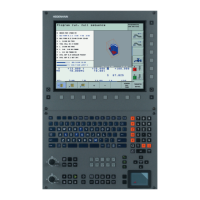
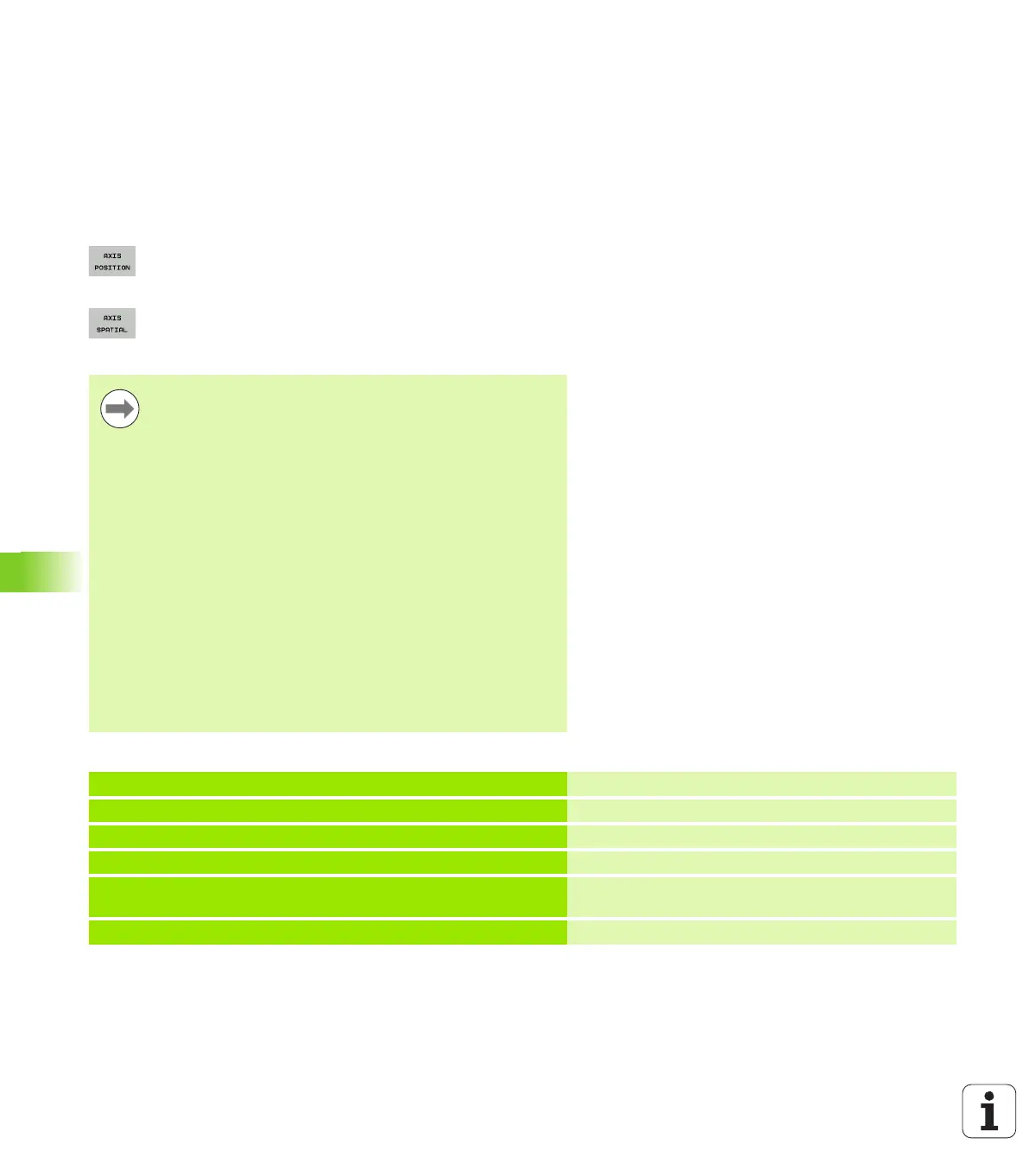